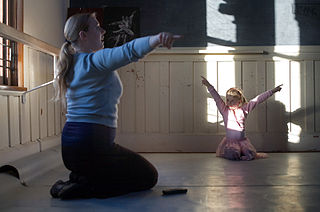 For most young children, dance class is a time to don the pinkest tights in town and join their friends in becoming fairies, soldiers and various other characters at the command of their teacher. It is only when children become a little older that ballet and dancing becomes a little more disciplined and structured. Instead of bouncing, bending and clapping there are pliés, tendus and lots of skipping. The focus may still be on having fun, but now works to encourage the ballet basics.
For most young children, dance class is a time to don the pinkest tights in town and join their friends in becoming fairies, soldiers and various other characters at the command of their teacher. It is only when children become a little older that ballet and dancing becomes a little more disciplined and structured. Instead of bouncing, bending and clapping there are pliés, tendus and lots of skipping. The focus may still be on having fun, but now works to encourage the ballet basics.
Ballet has been shown to have many positive effects for children, such as confidence, strength, flexibility and focus, love of music and rhythm promoted in classes. The class must also suit the child and their needs, with many not taking students before the age of three in order for them – and the others in the class – to have a fulfilling experience that is worthwhile.
Children need to be able to concentrate on the simple tasks of the class alongside the others. It is important the class is structured and secure, later translating into identifiable sections of warm up, barre work, centre practice, travelling and sequence. Their concentration will improve as they learn, forming a cycle of positive reinforcement. Ballet also provides much discipline, requiring children to focus whilst balancing rules with fun.
The physical development caused by ballet goes without saying: children need to be at least three before their range of movement and balance is sufficient to take on such a physical and mentally demanding activity. Following this they can then work on the co-ordination, strength, flexibility, grace, range of motion and endurance that is required. From there comes emotional development. Little dance students can become very independent quickly, moving alone and growing their confidence for this, as well as feeling comfortable as part of a group.
